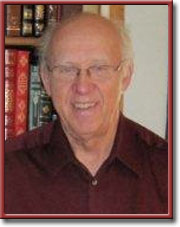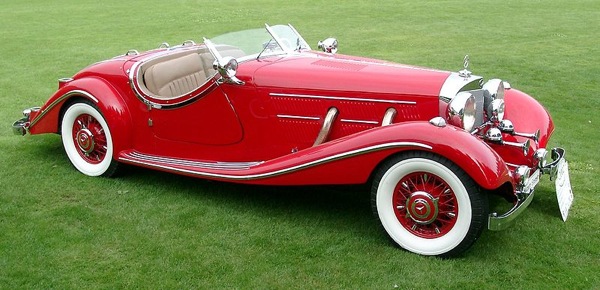The Joys & Sorrows Of The Downsizing Collector
Out to Pastoral
by John Idol

HILLSBOROUGH, NC—(Weekly Hubris)—8/30/10—My wife, Margie, and I suffered bites from the collection bug before leaving Clemson to settle in Hillsborough, NC. The infection soared quickly to a fever pitch. Instead of downsizing when we left Clemson, we actually built a larger house, believing we’d both enjoy more privacy—Margie, as she did her needlework in the silence needed for counting stitches; and I, listening to Bach or Mozart as I wrote. Her craft room would be downstairs and my study up. The arrangement has worked well, but now it’s coming to an end.
We’re moving into a two-bedroom apartment in a retirement center this fall—if we ever finish sorting out what we can take, what we must give away, and what we may be able to sell.
You see, when we took up living in a larger house, we no longer felt a need to weed out things. We were like that pack-rat couple in the D.H. Lawrence story called “Things.” We piled things in and then things on top of things. The closets of Fibber McGee and Molly could have been no more crowded than ours.
But it wasn’t just closets we stuffed. To give order and ready accessibility to her rainbow of threads, Margie bought tackle boxes and stashed away skein after skein, in families of color, ending up with four tackle boxes that never saw a fly or hook.
Entering merrily into my second childhood, I took up adding model cars to the three or four cars made in Occupied Japan: a 1904 Daimler sedan, a convertible Model A Ford, and a gaudy green and yellow MG. Like the proverbial child in a candy store, I wanted everything in the model car line that I saw up for bid on E-Bay. I finally recognized myself as a kind of Hawthornean monomaniac when I couldn’t resist being the high bidder on model cars of the 1930’s. Packards, Buicks, Cords, Whippets, Studebakers. Lincolns, Cadillacs I must have in addition to other cars made in the decade of my birth. Soon my shelves were full, soon some cars found parking spots on top of my computer, soon Margie asked, “When is this madness going to end?”
“About the same time you’ve added that missing shade of lavender to your tackle box,” I reasoned.
There was no controlling my monomania when I fixed my goal on collecting every issue or edition of an illustrated Hawthorne work. I gave myself an Ibsenian saving lie by declaring that my retirement’s crowning achievement would be an exhaustive look at illustrators of Hawthorne’s tales and romances.
Here again, E-Bay kept my zeal flaming hot. To a study already lined with shelves, I brought in assemble-yourself shelving and horded away my goodies: illustrations by Arthur Rackham, Maxfield Parrish, Hugh Richmond. F. O. C. Darley, and even one by Sophia Peabody before Hawthorne married her. But the one breaking the bank—and not an E-Bay purchase—was an autographed edition of Tanglewood Tales by Edmund Dulac. While I had the joy of adding a long-sought item, Margie had the sorrow of seeing our bank account shrink.
On a binge of book-buying in New England, where I found several choice copies of Hawthorne works, I stuffed the trunk and then the back seat of our sedan with books and, needing more room for some late discoveries, I imposed upon Margie for space on the passenger side. “If you keep on like this,” she wryly remarked, “I’ll have to go home as the hood ornament.”
A further return to childhood delights brought dragons back into my life, and this time not just dragons in storybooks. A tale of a Chinese dragon dance that I came upon in the first grade enthralled me then and continued to draw me into other stories about dragons.
That first book in time led to scores of other books on dragons, from those aimed at beginning readers up to accounts of dragon lore in the Middle Ages and Renaissance. Some books had pop-up dragons; others dragons with flickering, flame-colored tongues.
In my innocence, I was amazed to hear that Puff the Magic Dragon enjoyed a special status among pot-smokers. I welcomed him and his merry song to my collection.
Margie added to my joy by doing a ferocious dragon in needlepoint and bargello to hang in the entrance to my study.
All those books on dragons no longer sit on my shelves, one batch of them going to Parkway Elementary School in Deep Gap, NC, my natal spot, the second to Orange County Public Library in Hillsborough. “These books will make many children happy,” said the director of children’s programming at the Orange Library. “They are really excited to read books about dragons.”
My sorrow of giving them up quickly turned into a kind of joy when I pictured young readers becoming enthralled as I once had been.
Although we have our exclusive monomanias, Margie and I do share common tastes in music, even if I sometimes end up listening to Bach’s organ fugues alone. Our eclecticism has resulted in hundreds and hundreds of LP’s and CD’s. Classical, Country, Dixieland, grand opera, jazz, Doc Watson, Louis Armstrong, Ella Fitzgerald, Ricky Skaggs, Odetta, and many, many others. We had a special cabinet made for them, one that’s far too large for the space we’re moving to.
What to do with all that music? Little or no market for LP’s. Most of them will end up at the PTA thrift shop in Chapel Hill. May they bring joy to whoever has remained sensible enough to hang on to LP technology. Happily, several albums will find an appreciative ear in the person of Ray Barfield, whose monomania for recordings far surpasses mine. He’s driving up from Clemson this week to make his picks.

I’m left now to find someone who loves model cars and is eager to take them off my parking lot. I hate to see them go, especially a red 1936 convertible Mercedes Benz. Now, I must daydream of dashing around in it as a virile playboy. It’s truly a dream car, with all the bells and whistles, including a workable rumble seat, chrome-plated dual exhausts, and steerable front wheels.